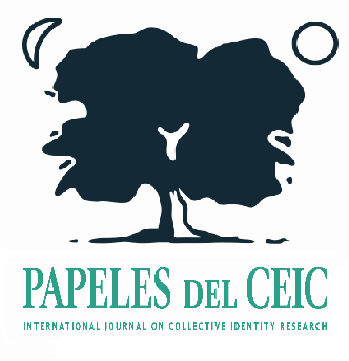The limit. On urban segregation in local contexts
##plugins.themes.bootstrap3.article.main##
##plugins.themes.bootstrap3.article.sidebar##
Published
11-09-2017
Sebastián Aguiar
Abstract
In 1965, N. Elias and J. Scotson carried out a research about the English town of Winston Parva, which has slowly become classical. In that study, they examine figurations on the social borders between those who lived in a territory and those who arrived later, focusing on the insecurity caused by the most recent neighbors. From that situation, they seek to isolate a configuration that could be translate into a model to be used to analyze similar situations. With this aim in view, in this research two other case studies are triangulated, involving the towns of Magdalena, Manaos (Brazil), and Valderas, Montevideo (Uruguay). Both present similarities and certain differences with Winston Parva, which acknowledges the paradigmatic character and the actuality of Elias' work. But the cases analyzed in this research, present an additional element: organized neighbors build a material division between the groups —a wall, a gate—. This radicalization regarding Winston Parva takes the issue to the edge inviting us to deepen into two ethical and political discussions: the moments where talking becomes impossible and the mystical foundation of authority in those decisions. That shows that segregation between new "marginalized" and "established" more prosperous is a dispute that only causes victims, of different types.
How to Cite
Aguiar, S. (2017). The limit. On urban segregation in local contexts. Papeles De Identidad, 2017(2), papel 177. https://doi.org/10.1387/pceic.17753
##plugins.themes.bootstrap3.article.details##
Keywords
urban segregation, local justice, configurations
Section
Research Articles
Papeles del CEIC is distributed under the licence Creative Commons Reconocimiento-NoComercial-SinObraDerivada 3.0 España (CC BY-NC-ND 3.0 ES)
Usted es libre de:
- copiar, distribuir y comunicar públicamente la obra
Bajo las condiciones siguientes:
- Reconocimiento — Debe reconocer los créditos de la obra de la manera especificada por el autor o el licenciador (pero no de una manera que sugiera que tiene su apoyo o apoyan el uso que hace de su obra).
- No comercial — No puede utilizar esta obra para fines comerciales.
- Sin obras derivadas — No se puede alterar, transformar o generar una obra derivada a partir de esta obra.
Entendiendo que:
- Renuncia — Alguna de estas condiciones puede no aplicarse si se obtiene el permiso del titular de los derechos de autor
- Dominio Público — Cuando la obra o alguno de sus elementos se halle en el dominio público según la ley vigente aplicable, esta situación no quedará afectada por la licencia.
- Otros derechos — Los derechos siguientes no quedan afectados por la licencia de ninguna manera:
- Los derechos derivados de usos legítimos u otras limitaciones reconocidas por ley no se ven afectados por lo anterior.
- Los derechos morales del autor;
- Derechos que pueden ostentar otras personas sobre la propia obra o su uso, como por ejemplo derechos de imagen o de privacidad.
- Aviso — Al reutilizar o distribuir la obra, tiene que dejar bien claro los términos de la licencia de esta obra.
The author can use his/her article freely always indicating that it has been published in Papeles del CEIC. International Journal on Collective Identity Research. Any re-edition of the article must be approved by the journal editorial team.


 http://orcid.org/0000-0002-5659-2135
http://orcid.org/0000-0002-5659-2135